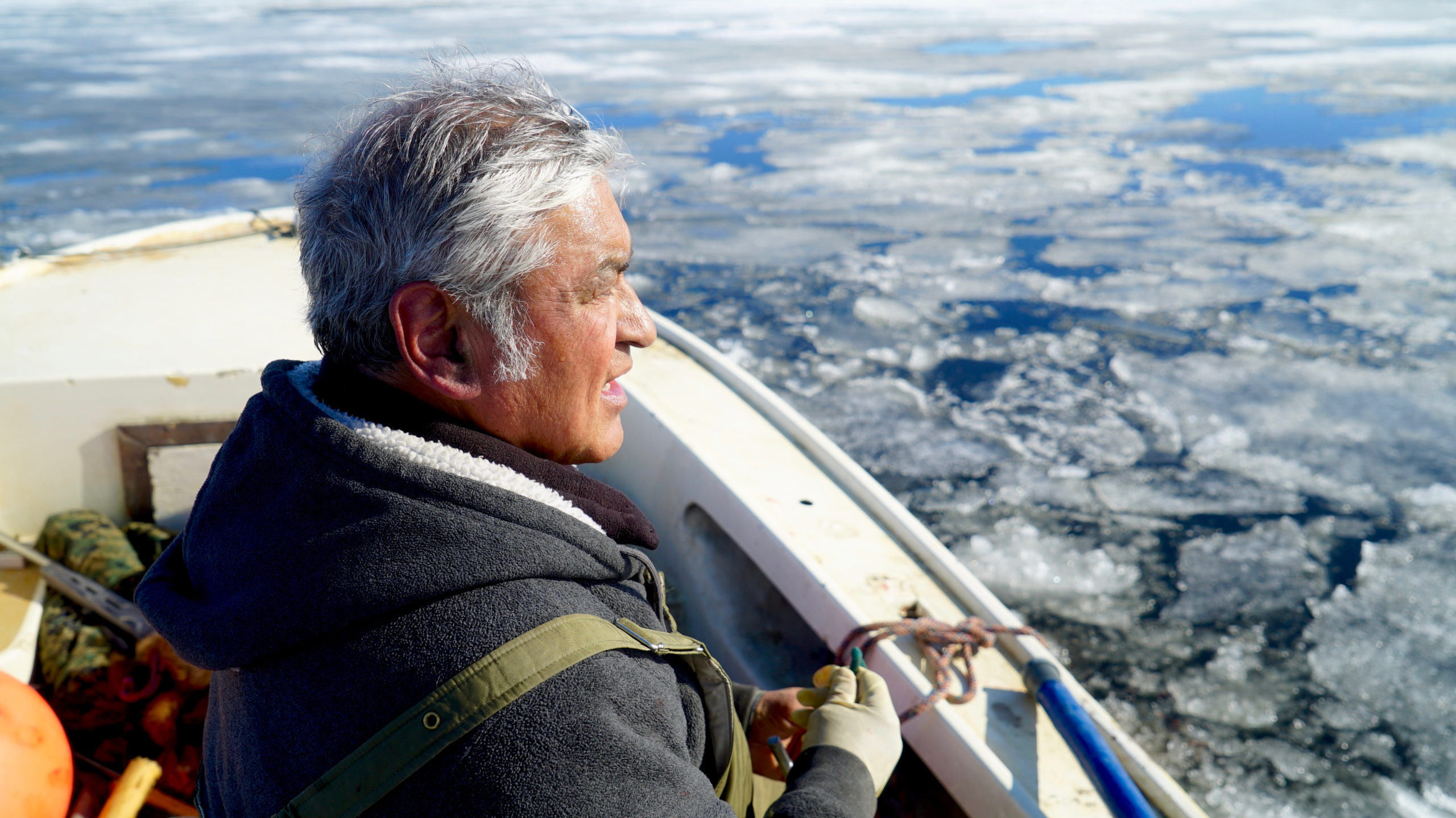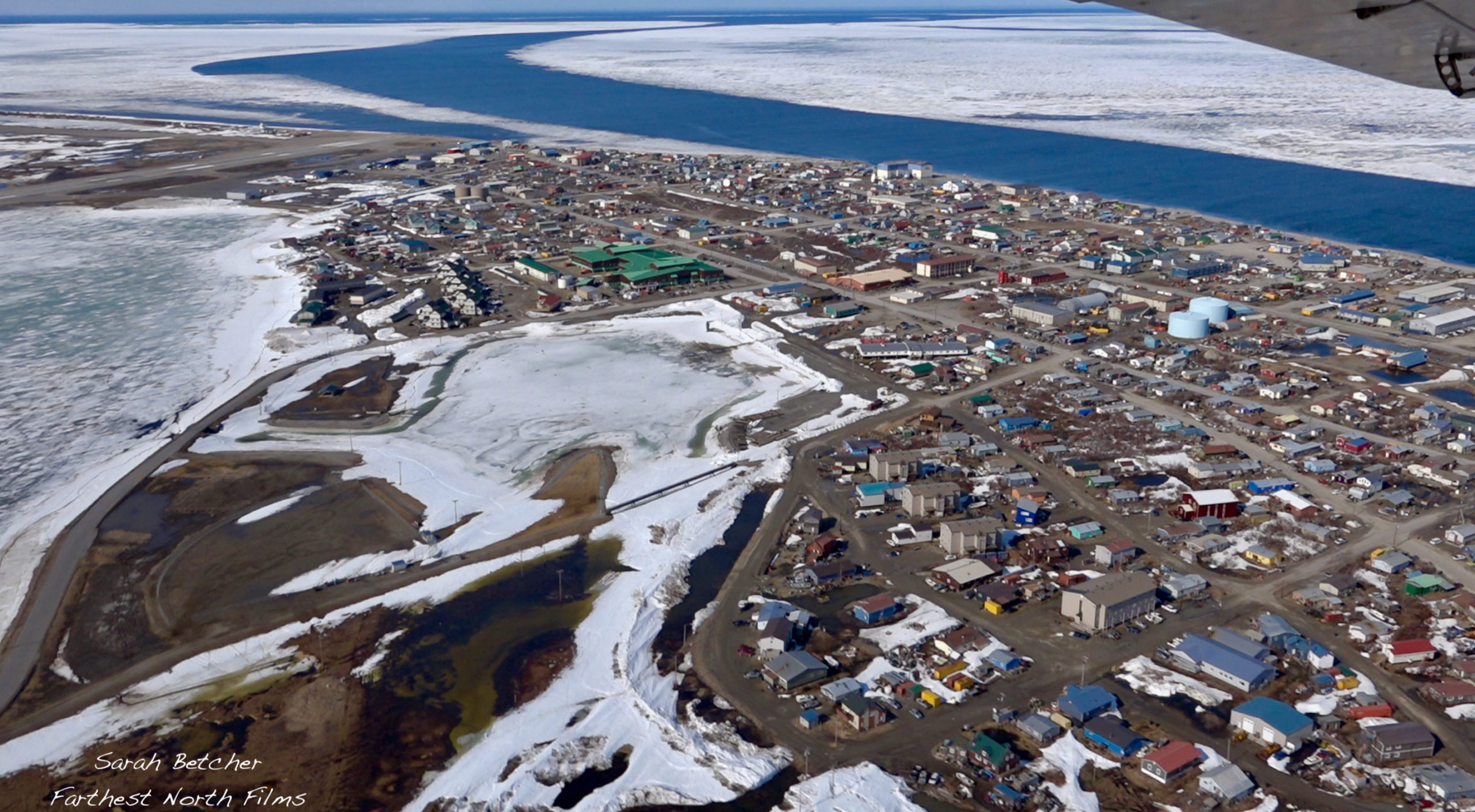A new Indigenous-led study documents how ice loss is changing seal hunts
The study, conducted in Alaska's Kotzebue Sound, was the first to come from a project designed to combine traditional Indigenous knowledge with Western science.

A decline in sea ice coverage has drastically reduced the amount of time that Inupiat residents of northwestern Alaska can hunt bearded seals, forcing them to compress their harvests and change their practices.
Those findings are detailed in a recently published study that is the first produced from a new program that gives Indigenous residents of the Kotzebue area a leadership role in research projects.
From 2003 to 2019, the seal hunting season diminished by about a day a year, with most of that change happening at the end of the season, according to the study, published in the journal Environmental Research Letters.
“The end of the hunting season has become earlier and earlier over time,” said Donna Hauser, a University of Alaska Fairbanks marine mammal biologist and co-lead author.
Bearded seals, called “ugruk,” move north into Kotzebue Sound each year as the ice recedes. That annual ice loss used to be much more gradual, the study said. Now, with waters opening quickly, conditions that in the mid-20th century were common in July are now emerging in May, the study said.
So far, hunters have managed to maintain harvest levels, getting enough seals for their families and for the community — but that has come at a cost.
Loss of ice means the hunters are making more frequent trips, and those trips are over wide stretches of open water. That means more danger, and at the very least, more unpleasantness for people riding in boats that are often only about 20 feet long.
“Nobody enjoys getting hammered by the ocean. That’s not a fun thing,” said Alex Whiting, environmental program director for the Native Village of Kotzebue and the other co-lead author.

The study is more than just a portrait of Arctic climate change and how it affects people; it’s also a collaborative project called Ikaagvik Sikukun, which means “Ice Bridges,” meant to be driven by leadership from the local community and link Indigenous traditional knowledge with more typical scientific approaches.
The project, started in 2016 and involving Columbia University and the University of Washington as well as UAF, flips the standard practice of scientists coming into Indigenous communities seeking help to answer predetermined research questions. Instead, the community members themselves led the project, selecting the research questions and using Indigenous knowledge, with help from Western science, to lead to answers.
For the seal hunting study, a significant portion of the data comes from a journal that Whiting started in 2002. Whiting said he was inspired by historic journals — notably the writings of Bob Uhl, who lived for decades in the Cape Krusenstern area — to record what he saw around him in the natural world and what people were doing in their daily lives.
“There’s all kinds of useful information that I have in my journal about when things are happening, especially because everything in the Arctic is migratory,” he said. “Everything around here is always moving.”
His journal did not start out as the basis for a scientific study, he said. “At the time that you write a journal, the events don’t seem extraordinary. As time goes on, they become more and more interesting and valuable as information.”
Other important data came from a group of elders, people Whiting described as a “perfect cohort” of experts. The Elders Advisory Council is a pillar of the Ikaagvik Sikukun project, identifying research questions, supplying historical context and helping to design studies.
For the seal hunting study, the elders provided key information about bearded seal habitat and the sea ice conditions needed for hunting to be successful, Hauser said. “They guided the research every step of the way,” she said.
That Indigenous knowledge was augmented with quantitative Western science — satellite imagery and other data provided by experts from UAF, Columbia University and the University of Washington.
“This Ikaagvik Sikukun program is absolutely unique and, I think, is the way of the future. I hope it’s the way of the future,” Hauser said. “This is the most transformative study that I’ve ever been involved with in my career.”
The Ikaagvik Sikukun project even includes a filmmaking company, not a typical feature of other academic research, she noted.

Despite the drastic changes in ice conditions and seal habitat, Kotzebue-area seal hunters have managed to get adequate harvests by adjusting their practices, the authors said. So far, there haven’t been bad hunting seasons, they said.
A good year “is when everyone has had the opportunity to get at least their needs met,” Whiting said.
Luck has aided some of that recent hunting success. In 2019, Alaska’s hottest year on record, there was almost no ice in Kotzebue Sound, other than a tiny bit of floating ice that happened to be very close to the community. Conveniently for the hunters, the seals congregated on that remnant bit of ice.
That luck could flip in another year, with remnant ice located far away from the community, Hauser said.
While the academic researchers wanted to study changes to sea ice, they specifically wanted to focus on impacts to people in Kotzebue, Hauser said. That meant letting those affected people take leadership of this study and the others in the Ikaagvik Sikukun program, “We really have been putting Indigenous knowledge at the forefront,” she said.
The seal hunting study is the first Ikaagvik Sikukun product to be published, but two others have followed closely.
One study, led by Andrew Mahoney of UAF and published in the Journal of Glaciology, ties the thin shorefast ice in recent warm winters to widespread surface flooding and an early start to the hunt for bearded seals. The sea ice near Kotzebue in the winters of 2017-18 and 2018-19 was the thinnest in recent memory, likely the thinnest since at least 1945, the study said.
Another newly published study, led by Columbia University scientists, addresses the question of why ice was so scarce in Kotzebue Sound during those two winters. The study, published in the journal JGR Oceans, identified heat sources in the ocean, which melted ice during the winter, and in river water, which hastened the melt in the spring and summer.